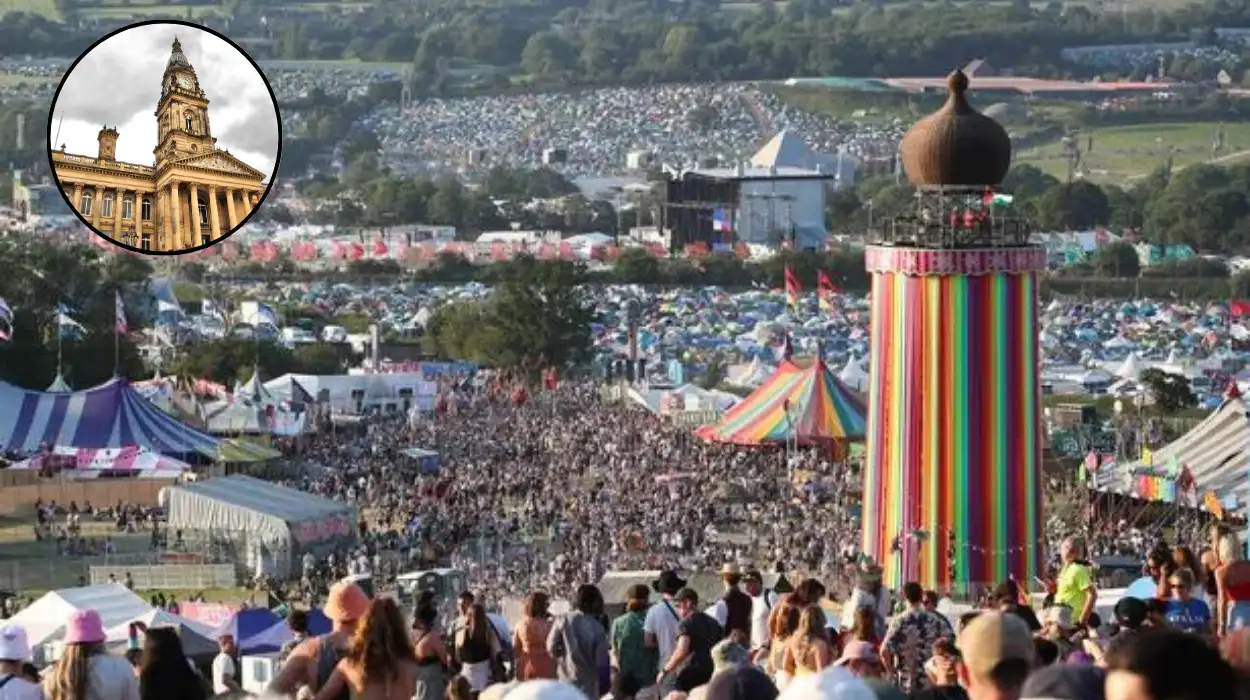Key Points
- Glastonbury Festival is one of the world’s largest music festivals, held at Worthy Farm, Somerset.
- The festival site covers approximately 900 acres (3.6 square kilometres).
- Bolton, a town in Greater Manchester, features several notable parks and public spaces, such as Queen’s Park and Leverhulme Park.
- Comparisons highlight that the Glastonbury site is significantly larger than any single park or public venue in Bolton.
- The festival’s size is often likened to entire city centres or multiple football stadiums.
- Glastonbury’s scale allows it to host over 200,000 attendees, with extensive camping, performance, and hospitality zones.
- Local authorities and event organisers use these comparisons to illustrate the festival’s logistical and cultural impact.
- The festival’s size is a key factor in its global reputation and the complexity of its operations.
Glastonbury Festival’s vast venue dwarfs public spaces in Bolton, underlining the event’s scale and logistical demands. As the world’s most famous music festival returns, comparisons with local venues in Bolton reveal the sheer magnitude of Worthy Farm’s transformation each year.
How Large Is Glastonbury Festival’s Venue?
Glastonbury Festival, staged at Worthy Farm in Somerset, occupies a sprawling site of approximately 900 acres, equivalent to about 3.6 square kilometres. According to coverage by Geo News, the festival’s footprint is often compared to entire city centres or multiple sports stadiums to help the public visualise its scale.
How Does Glastonbury’s Size Compare to Bolton’s Public Spaces?
Bolton, a historic town in Greater Manchester, is home to numerous parks and public venues, but none approach the size of Glastonbury’s festival grounds. For context:
- Queen’s Park in Bolton covers roughly 22 hectares (0.22 square kilometres).
- Leverhulme Park, the largest in Bolton, spans about 56 hectares (0.56 square kilometres).
By comparison, Glastonbury’s venue is more than six times the size of Leverhulme Park and over sixteen times that of Queen’s Park.
What Do These Comparisons Reveal About the Festival?
As noted in Geo News’s 1PM Headlines on 27 June 2025, the Glastonbury Festival’s size is a logistical marvel, enabling it to accommodate over 200,000 attendees, thousands of staff, and hundreds of acts across dozens of stages. The festival’s infrastructure includes:
- Extensive camping areas
- Multiple performance zones
- Food courts and hospitality tents
- Medical and emergency services
The scale of the event is such that it temporarily creates a city larger than many UK towns, including Bolton.
Why Is Glastonbury’s Venue Size Significant?
According to reporting by Geo News, the size of Glastonbury is not just a point of trivia—it is central to its identity and operational challenges1. The vast area allows for a diverse range of performances and experiences, from headline acts on the Pyramid Stage to smaller, niche performances in remote corners of the site.
Event organisers and local authorities frequently use comparisons with places like Bolton to communicate the festival’s impact, especially regarding crowd management, transport, and environmental considerations.
How Do Organisers Manage Such a Large Venue?
Managing a venue of this size requires year-round planning. As explained in Geo News’s coverage, the festival’s organisers coordinate with local authorities, emergency services, and environmental agencies to ensure safety and sustainability. Key strategies include:
- Detailed mapping and zoning of the site
- Robust waste management and recycling programmes
- Comprehensive transport plans, including shuttle buses and temporary road closures
- On-site medical and security teams
What Are the Cultural and Economic Impacts?
The festival’s scale has significant cultural and economic implications. Worthy Farm becomes a temporary city, supporting local businesses and attracting global media attention. The economic boost to Somerset is substantial, with benefits rippling out to surrounding towns.
While Bolton does not host an event of comparable size, the comparison underscores the unique draw and influence of Glastonbury. Local venues in Bolton, though smaller, play a vital role in community life but do not match the international profile or economic impact of Glastonbury.
How Do Locals in Bolton React to These Comparisons?
Residents and local officials in Bolton often express amazement at the scale of Glastonbury when comparisons are made. These comparisons are used to foster a sense of perspective and sometimes to inspire local event organisers to dream bigger, though the logistical realities of replicating Glastonbury’s scale are daunting.
What Is the Future of Glastonbury’s Venue and Its Comparisons?
As the festival continues to evolve, organisers are exploring ways to enhance sustainability and inclusivity without expanding the site further. The comparisons with places like Bolton serve as a reminder of the festival’s extraordinary scale and the challenges and opportunities it presents.
What Can Be Learned from the Glastonbury-Bolton Comparison?
The juxtaposition of Glastonbury’s venue with Bolton’s public spaces highlights the exceptional nature of the festival. It also illustrates the importance of context when discussing event planning, crowd management, and cultural impact.
“Glastonbury’s size is not just a statistic—it’s a symbol of what is possible when communities and organisers work together to create something extraordinary,”
reported Geo News in its 1PM bulletin on 27 June 2025.
In summary, Glastonbury Festival’s venue is a unique phenomenon in the UK, far exceeding the size of any public space in Bolton. The comparison serves to emphasise both the festival’s logistical complexity and its cultural significance, making it a benchmark for large-scale events worldwide.
